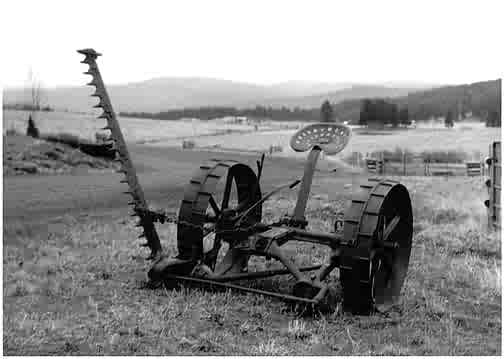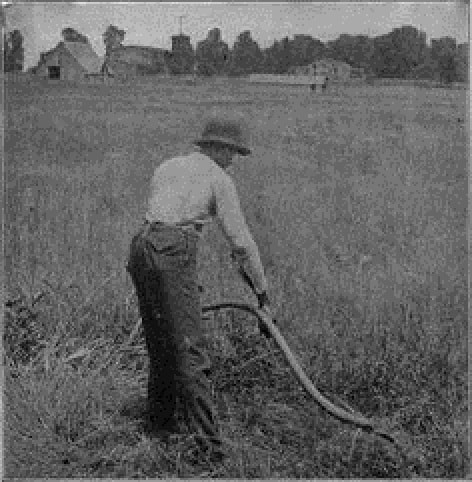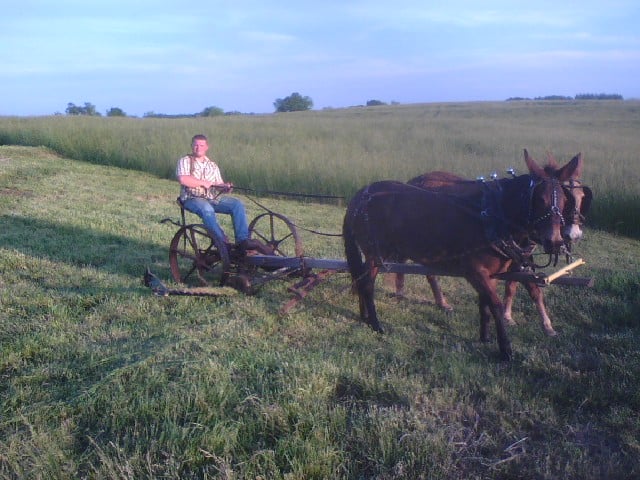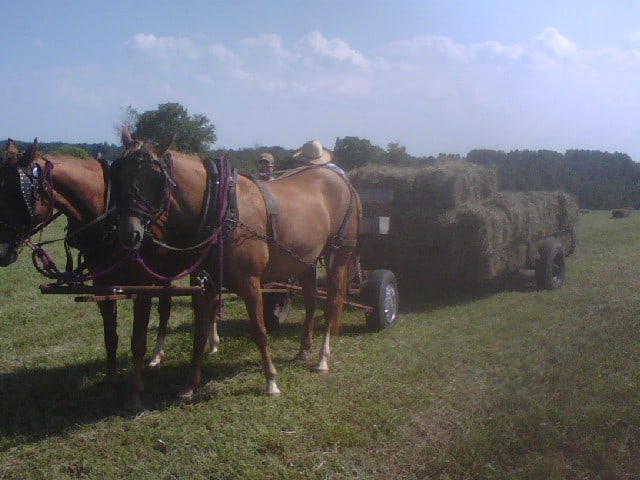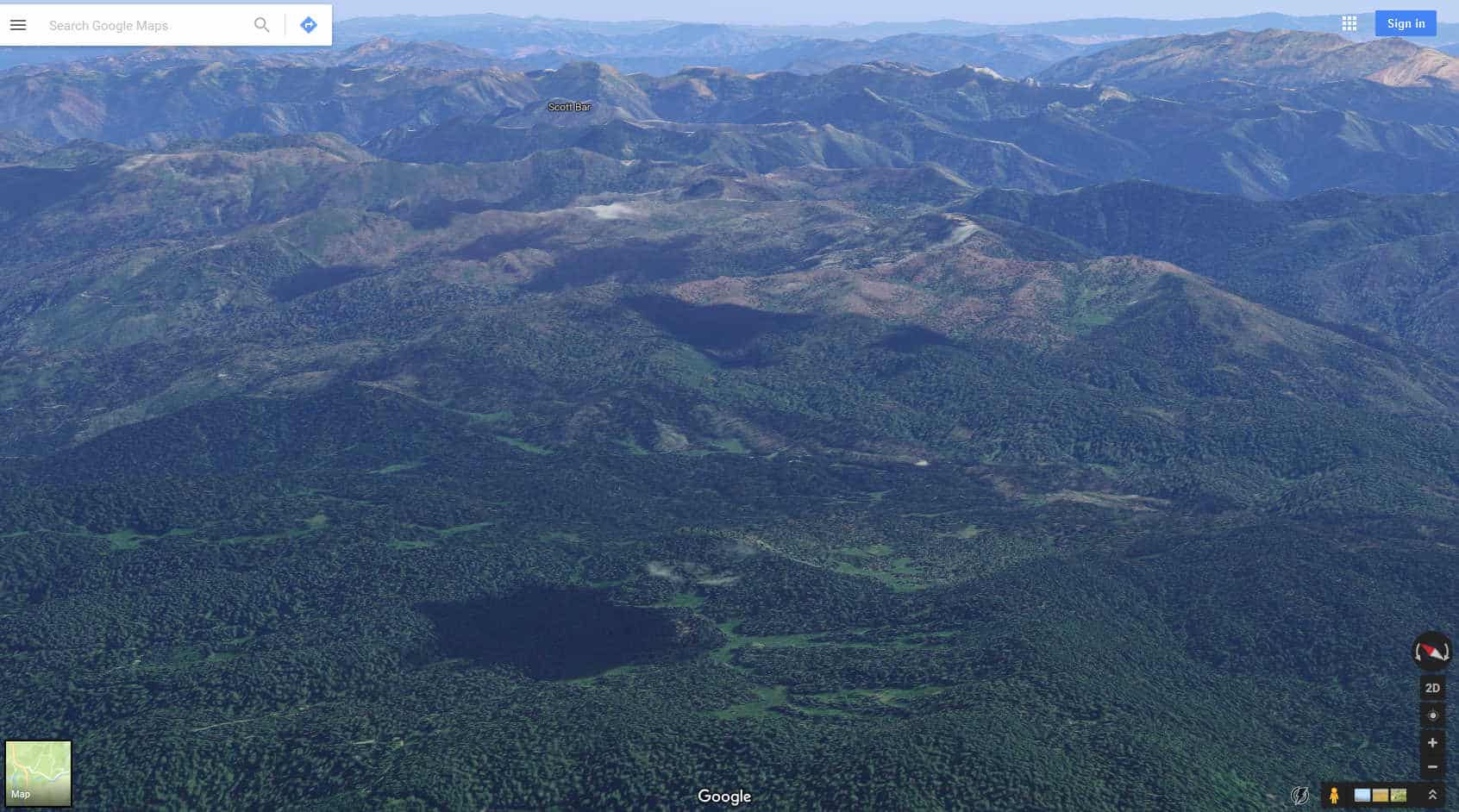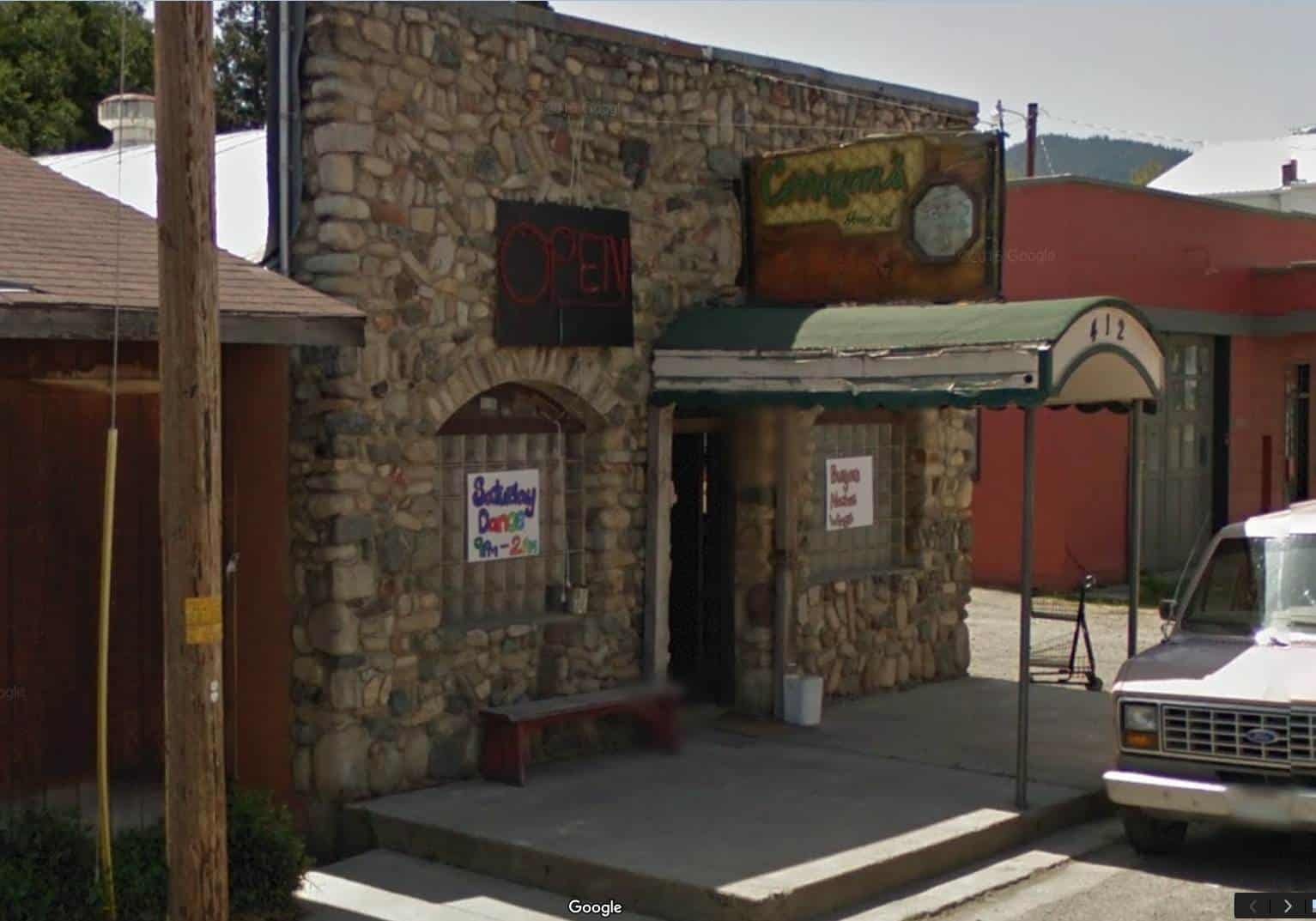Holy Cow, post: 394274, member: 50 wrote: Trust me, I'll not take your scythe on the issue. BTW, I actually own a scythe like the one shown. Except for a few experimental whacks at some tall grass, it has remained safely stored in the garage for at least 24 years.
We had a few items of two-row, formerly horse-drawn implements around when I was 10 and under. They had been converted to be used with a tractor. A corn planter of that type was used a bit for planting sweet corn in the extension to our garden. I did get to ride around on the cast iron seat a time or two. Today that would be considered child endangerment. I thought it was great fun.
Pops didn't buy a gasoline lawn mower until I was about in the 5th. or 6th. grade. We mowed the best part of our 3/4 acre (except for the garden) with a push mower. It wasn't that bad. If you keep the blade sharp and the gears clean and well oiled, they really do work pretty good. Spring and early summer when the grass was thick and lush was the worst, it would clump up and every so often we'd have to hand pull all the grass out of the mower...but by mid-summer you could mow just like a cake walk.
Not that I would want to go back to those days anytime soon....we also use to live just fine without A/C.... I'd probably have to call an ambulance if my A/C broke nowadays. 😉
paden cash, post: 394269, member: 20 wrote: A mule drawn sickle mower might have been frustratingly slow, but in my mind it beat the alternative...
Thank God Momma Cash married a city boy..;)
My dad has one of those. He converted it to be pulled with a tractor and used it up through the 80's.
Dad was great on a scythe.
He'd make short work of å? an acre of long grass. It was magic to watch and for those with "the swing" isn't as arduous as it looks.
I never mastered it like dad, but was able to cut grass!
Comparison with those so gifted and those with someone with absolutely no idea and watching them attempting to swing a sledge hammer or an axe where they strangle the poor handle and get nowhere, except a lot of energy spent and either saw muscles or an injury!
He would tell me of his life in Singapore and how "the boy" would keep the tennis courts in shape with a scythe.
Guess it's what you were used to and best at.
paden cash, post: 394269, member: 20 wrote: A mule drawn sickle mower might have been frustratingly slow, but in my mind it beat the alternative...
Thank God Momma Cash married a city boy..;)
I've got my Papaw's scythe hanging in the shop, I never saw it used in action but could imagine you butt was dragging after swinging it all day. How big an area can a fellow cut with one of those in a day?
Someone needs to teach him to turn it around. Drive on the already mown grass. The first round should be the only time of driving through the standing grass.
I assume he was simply doing a quick test run and not out to mow fifty acres with it.
Holy Cow, post: 394293, member: 50 wrote: Someone needs to teach him to turn it around. Drive on the already mown grass. The first round should be the only time of driving through the standing grass.
I assume he was simply doing a quick test run and not out to mow fifty acres with it.
I think he was trying avoid some stuff on the right. It was the first pass. He was just tinkering around, I think the most I have seen him cut with it was a few acres.
I spent a lot of hours riding one of those mowers as Dad pulled it with the Ford 8N. It was quite useful to have someone back there to control the height of the sickle bar as you mowed over rough spots and along the edge of a ditch.
We also spent a lot of time when I was in jr high and high school dragging the old horse-drawn machinery out of peoples' fence lines and scrapping it. I learned a lot about strength of materials and design. For instance I learned how to break the cast iron wheels of those mowers into easy-to-carry pieces with a sledge hammer, without breaking a sweat. It's all in which direction you hit.
Holy Cow, post: 394293, member: 50 wrote: Someone needs to teach him to turn it around. Drive on the already mown grass. The first round should be the only time of driving through the standing grass.
I assume he was simply doing a quick test run and not out to mow fifty acres with it.
I bet if he has a team of work horses and tack, he knows more than you give him credit.
NDrummond, post: 394198, member: 1865 wrote: These are called by a couple different names- "Hay press" or "Stationary hay press".
There are at least a couple of places in the Sierra Nevada named "Haypress Meadows" (sometimes singular). The one I'm most familiar with is above Echo Lake, not far from Lake Tahoe. I'm told that in the Gold Rush days someone stationed a hay press there to provide feed for the livestock crossing the mountains. But what I don't understand is how they got the bales from the meadow to the old Placerville road, which is now U.S. Highway 50. The trail from Haypress Meadows to Echo Lake is narrow, rocky and quite steep in places. It's about a mile and half from the meadow to the lake, and about 800 feet of elevation difference.
I suppose they could have brought them out by mule, 2 bales per animal, but that seems like an awfully inefficient way of moving hay.
I've been through Haypress Meadows in the Marble Mountain Wilderness (Siskiyou County) many times without giving the name a second thought. The meadows are located many miles from and over 4000' above the nearest historic main travel route on the Klamath River, but is located at the base of the steep ascent into the alpine area, so I'm wondering if the hay wasn't for pack trains going after minerals or game, or just wilderness adventure.
Really old farm equipment was designed to be simple, small and easy to repair as nearly all purchasers operated very small farms by today's standards. The owner had to be able to do most of the repairs that might become necessary with a fairly small list of tools required. Also, most equipment was light enough to be handled by one man of normal strength. A great example is the sickle bar mower seen above. It was relatively light weight and repairs could be made with simple tools. The most common problem was breaking or knocking off one of the knife sections that reciprocated between the guards to slice off the standing grass or similar forage crop. All one had to do was stop; grab a chisel, punch, small block of iron and ball-peen hammer; slide the sickle bar to place one of the critical rivets in the repair position; knock off the head; punch out the old rivet; repeat with the second critical rivet; remove the broken section; place a new section in the proper spot; insert one rivet and swell the head a bit; repeat with the other rivet; check the alignment; then finish swelling the head of each rivet.
By comparison, today's common disk mower is a disaster. First it is very heavy. Second, multiple knife blades on each of the drums will be damaged. Third, due to the weight involved, striking a fixed object may damage the entire mowing arm instead of a minor part of the total on the old sickle bar mower. Downtime goes from a few minutes to hours or days. An example of this happened about a month ago in one of my meadows. Although this meadow gets mowed every year somehow an 8-foot length of 2-1/2" pipe was discovered, the hard way, near the middle of the field. I have no idea where it came from and it obviously had been there for several years as it was settled in fairly well based on the 8-foot depression in the grass roots. The disk mower caught one end of it perfectly to raise it up and hit nearly every knife blade plus wedging perfectly to severely bend the drums. Several days and about $2000 in repairs later the mower was ready for use again. With a standard sickle bar mower about the worst thing that might happen by hitting the pipe in the same direction is knocking off two or three sections and damaging one or two guards. Within 15 minutes and under $30, mowing would continue. The old timers with the small equipment could not endure such major problems as the modern disk mower can create.
"By comparison, today's common disk mower is a disaster"
Person renting my farm had a John Deere conditioner mower.
Old fella cutting the grass offered to cut and bale a small paddock to clean it up.
I had forgotten about the roll of ringlock wire that was standing above the grass.
He hit it mid mower.
I heard the whoomp and silence. Knew exactly what'd happened. Days spent cutting the wire into small sections off the many discs.
All in a days work for him.
Holy Cow, post: 394554, member: 50 wrote: All one had to do was stop; grab a chisel, punch, small block of iron and ball-peen hammer;
I had the pleasure of doing this a few times when working for nearby farmer in my younger years. Repairing equipment was always more fun for me than actual farming operations.
BajaOR, post: 394502, member: 9139 wrote: I've been through Haypress Meadows in the Marble Mountain Wilderness (Siskiyou County) many times without giving the name a second thought. The meadows are located many miles from and over 4000' above the nearest historic main travel route on the Klamath River, but is located at the base of the steep ascent into the alpine area, so I'm wondering if the hay wasn't for pack trains going after minerals or game, or just wilderness adventure.
I read a book titled "In the Land of the Grasshopper Song" last winter. It describes the miners from the Somes Bar/Salmon River area going up into a very large meadow in the Marbles to gather their hay for the winter. I believe the meadow was on the trail from Somes Bar to Etna. I always wondered what meadow it was. I assumed it was Big Meadows, but could be wrong. The Deacon Lee trail went from Etna to the coast and was suitable for small wagons. I'm not sure the exact route. It is a narrow trail now.
Of course they would have just bundled it up by hand back then, but it would have been tradition to gather hay in the mountains when the first mechanical balers were invented and they could have carried much much more hay than they did in the old days.
imaudigger, post: 394615, member: 7286 wrote: I believe the meadow was on the trail from Somes Bar to Etna.
I have fond memories of the bar in Etna. Back in my younger (drinking) days I was on a crew that did some topo and staking for a new water line there, and the bar was always a fun and friendly place.
I haven't been there in about 25 years; has the place changed much?
I wouldn't be surprised to find out the meadows of your book are those in the area of Haypress (Stanshaw, Haypress, etc) because those are in some of the only flat ground in the area. It appears there are much larger meadows up there, but they are on steep ground. Stanshaw is in the foreground in the attached Google Maps image.
Jim Frame, post: 394624, member: 10 wrote: I haven't been there in about 25 years
Make that about 35 years (I skipped a decade when counting).
Jim Frame, post: 394624, member: 10 wrote: I have fond memories of the bar in Etna. Back in my younger (drinking) days I was on a crew that did some topo and staking for a new water line there, and the bar was always a fun and friendly place.
I haven't been there in about 25 years; has the place changed much?
Must have been Corrigans? I have been there a couple times after the annual rodeos when I was younger.
I remember it had the money plastered all over the walls and ceilings similar to the bar in Callahan.
I'm not sure it is open full time any more. It may even be closed except for special occasions.
Being that I was only 12 years old at the time...I'm not sure how much town life has changed. It's a great town.
I know the local economy was doing much better 30 years ago. A lot of the old bars have shut down in the last 20 years.
